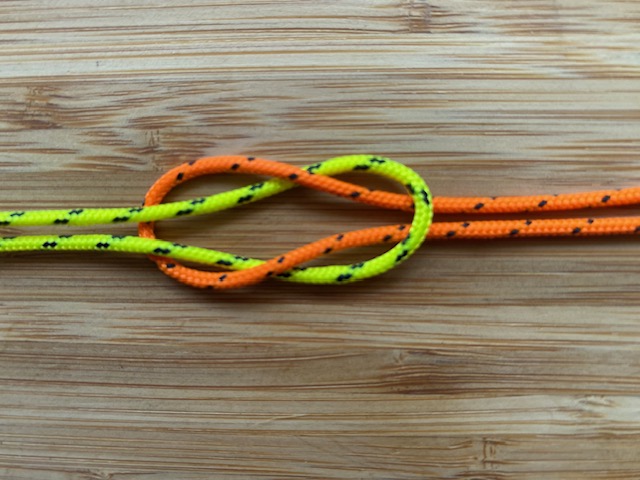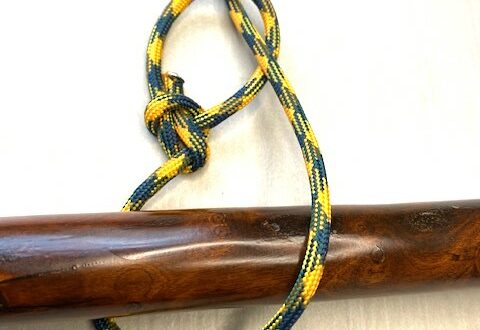
Reef Knot: Reliable Knot for Securing a Rope Around an Object.
The Reef Knot, also known as the Square Knot, is a swift and reliable binding knot.
Its historical roots trace back to its role in securing sails—literally “reefing” them to decrease surface area. This knot shines in various realms, from boating and fishing to first aid and outdoor adventures, thanks to its ability to grip tightly under tension, lie flat, and remain easily untangled.
It is a binding knot, to secure a line around an object. Truly a knot of many talents!
Tying Guide
- Overlapping the Ropes: Place the ends of the two ropes parallel to each other, overlapping by say 12 inches (30 cm).
- Cross Over: Take the left end (working end) and cross it over the right end (standing end) to form a simple half-knot. The left end should now be on the right side, crossing over the right end.
- Cross Under: Take the left end (now on the right side) and pass it behind the right end. Cross it underneath the right end, forming another half-knot. Ensure the ends are parallel and aligned.
- Finish the Knot: Pull both ends firmly to tighten the knot. The Reef Knot is complete when the ends are secured, and the knot forms two interlocking half-knots that are opposing each other.
- Check the Knot: Verify that the Reef Knot is symmetrical and lies flat. Each end should emerge from the knot on opposite sides.
Tips:
- Equal Tension: Apply equal tension to both ends when tightening the knot to ensure it holds securely.
- Remember “Right Over Left, Left Over Right”: This mnemonic can help you remember the initial steps, but be cautious not to reverse the order as doing so creates a Granny Knot, which is less secure.
Be mindful that the Reef Knot is suitable for joining two ropes temporarily. However, it’s not recommended for critical loads or situations where security is essential, as it can slip or capsize under certain conditions. Always assess the intended use and consider using more secure knots for critical applications.





